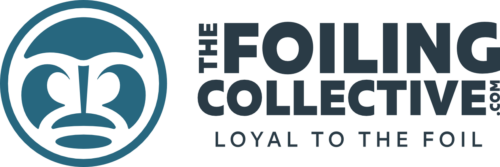One of the most common questions for new and progressing wing foilers is:
“What size wing foil board should I get?”
When deciding which wingfoil is right for you, the right board depends on your skill level, body weight, wind conditions, and even the type of water you’ll be riding on. Choosing the right wingfoil board is essential whether you’re just starting out or progressing to advanced moves, as picking the correct size will fast-track your learning and keep sessions enjoyable.
Beginner: Big, Stable & Forgiving
If you’re new to wing foiling, go for a board that prioritises volume and stability. This helps you get up on your feet, balance easily, and focus on mastering the wing without worrying about sinking. For beginners wondering which wingfoil board to start with, choosing the right wingfoil board with adequate volume is crucial.
Recommended Volume:
- Your body weight (kg) + 30–40 litres
(e.g. an 80 kg rider = 110–120 L board)
Wind & Water Considerations:
- Light winds: Larger boards give better glide and lift in sub-15 knot conditions.
- Choppy or messy water: Higher volume helps you stay balanced when water isn’t flat.
- Flat inland lakes or reservoirs: Great for learning, and large boards excel here.
Popular Beginner Board:
- F-One Rocket Wing ASC – Tough and beginner-friendly
Intermediate: Responsive Yet Manageable
Once you’re consistently flying on foil, staying upwind, and turning confidently, it’s time to downsize for better control and manoeuvrability. Choosing the right wingfoil board for intermediates is key to improving skills.
Recommended Volume:
- Your weight (kg) + 10–20 litres
(e.g. 80 kg rider = 90–100 L board)
Wind & Water Considerations:
- Medium to strong wind (15–25 knots): You can ride a slightly smaller board with ease.
- Flat or rolling swell: A compact board handles carving and turns better.
- Offshore spots or open water: Slightly more volume gives forgiveness in gusty conditions.
Popular Intermediate Board:
- Armstrong Wing FG 90L – Performance-focused without being too twitchy
Advanced: Compact & Agile
Advanced riders want speed, jump performance, and wave-carving ability. These boards are low volume and compact, ideal for tight turns and aerial tricks—but unforgiving if your balance or wind conditions are inconsistent. Advanced riders need to carefully choose the right wingfoil board that fits their skill set for optimal performance.
Recommended Volume:
- Your weight (kg) – 10 to 20 litres
(e.g. 80 kg rider = 60–70 L board or smaller)
Wind & Water Considerations:
- Consistent strong winds (20+ knots): Smaller boards shine when you have reliable power.
- Clean wave spots: Compact boards carve better on swells.
- Choppy or offshore conditions: May be more difficult unless you’re experienced.
Popular Advanced Boards:
- F-One Rocket Wing-S Carbon – Fast, responsive, and surf-ready
Other Key Considerations
Riding Location: Inland lakes are flatter and more forgiving—go bigger. Open sea with swell? You can size down once experienced.
Wind Range: If you ride mostly in low wind areas, size up for easier takeoff and staying on foil.
Inflatable vs Hard Boards:
- Inflatable: Great for travel and beginners; softer on crashes.
- Hard board: Better performance as you advance.
Final Thoughts
Choosing the right wing foil board size is all about balancing volume, skill, and conditions. A good rule of thumb:
- Bigger boards = easier starts, better stability
- Smaller boards = more control, more performance
Demo if you can—and don’t be afraid to ask for advice on which wingfoil board is best for your needs. The right board will make a massive difference in your progression and enjoyment. Choosing the right wingfoil board truly enhances your riding experience.
Ready to Ride?
Explore our collection of beginner to expert wing foil boards from top brands like F-One, ENSIS, Naish, AXIS, Armstrong, North, Core, RRD, and more. Not sure what’s right for choosing the right wingfoil board for you? Contact us—we’re here to help.








